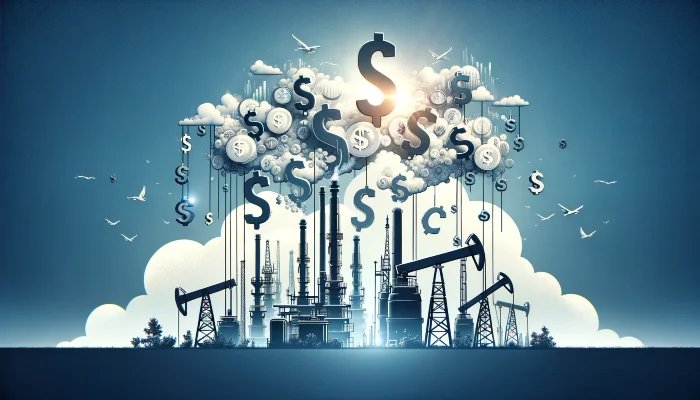The 2021 U.S. climate legislation, known as the Inflation Reduction Act (IRA), is setting the stage for a significant financial hit to the oil and gas sector with its novel approach to curbing methane emissions. The law introduces a fee of $900 for every metric ton of methane released beyond a certain limit starting in 2024. Given the oil and gas industry’s hefty contribution to methane emissions, constituting a third of the U.S.’s total, this move could cost the industry over $1 billion.
Methane, a key component of natural gas, has long evaded strict regulation due to its diffuse sources. However, the EPA’s new rule, complemented by a directive for drillers to actively monitor and repair leaks, signifies a pivotal shift towards accountability. The EPA is also revising how methane emissions are reported, aiming for more accurate assessments and fair fees.
Geofinancial Analytics’ study, leveraging satellite data, estimates that the top 25 U.S. oil and gas producers might face up to $1.1 billion in fees for a single year’s emissions. Notably, industry giants like Chevron and Shell are positioned to avoid these fees due to their lower emission levels, a benefit of advanced technology and scale. Nevertheless, the fee targets significant emissions, potentially impacting about a third of all methane emissions from the sector.
Critics from the industry, represented by groups like the American Petroleum Institute, have pushed back, seeking to repeal the fee. Yet, the regulation’s implications for smaller operators and those with older wells, like Diversified Energy Company, are profound. Diversified, owning around 70,000 aging wells, could face up to $184 million in fees, challenging its financial sustainability.
The complexity of accurately quantifying methane emissions complicates compliance. Traditional EPA methodologies, based on equipment counts and outdated emission factors, are being revamped to reflect modern drilling technologies and the reality of emissions better. The proposed updates aim to close the gap between reported and actual emissions, but will likely not capture all discrepancies.
Advancements in satellite technology and independent monitoring are enhancing transparency, offering a more accurate picture of methane emissions. These developments hold companies more accountable, potentially influencing investor decisions and public perception.
More To Discover
- Enviva’s Wood Pellet Plant in Georgia, the World’s Largest, Is Exceeding Pollution Limits According To State
- Hermit Crabs’ New Plastic Address: A Sad Sight on Tropical Shores
- Vanuatu Stops Chinese Logging Firm Amid Theft Claims and Workers In Chinese Military Uniforms
- Climate Change Rolls Back Decades of Clean Air Progress in U.S., Study Reveals
Critics argue that the EPA’s revised methodologies and the industry’s self-reporting practices may still allow for underestimation of emissions. The debate over the most effective way to measure and mitigate methane emissions underscores the challenges ahead in aligning industry practices with environmental goals.
As the IRA’s methane fee implementation nears, the oil and gas industry faces a critical juncture. The potential financial implications underscore the urgency of reducing methane emissions, not just for environmental compliance but for the sector’s economic viability in a transitioning energy landscape.















